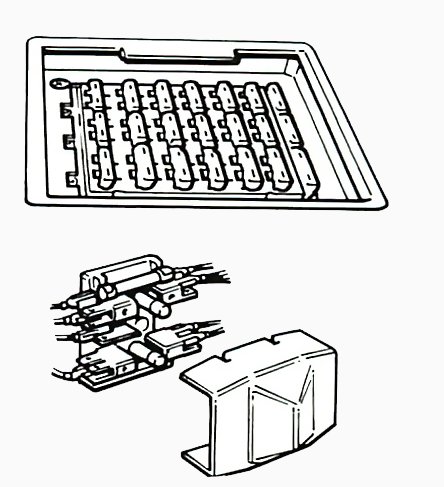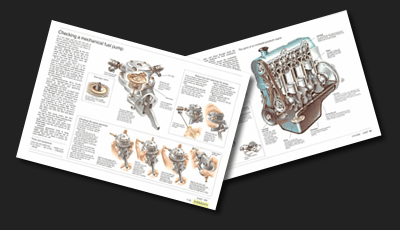Finding the fusebox
Older cars had a simple plastic fusebox - sometimes two fuses protected the whole car's electrics. The older type of fusebox is often housed under the bonnet; later types are usually mounted under the dashboard and have more fuses.
Some electrical failures will stop the car dead, but others you might not notice until you switch on a particular accessory. However, if you keep the right equipment in the car, you can fix most failures by the roadside and continue on your journey.
Diagnosis
Where to check if car electrics fail
If the car stops or any part of the electrical system fails, check the fusebox first.
If the engine stops completely and the fuses are intact, check the main earth strap.
If there are no obvious problems, check for short circuits and parted plug connectors.
This video course is the best way to learn everything about cars.
Three hours of instruction available right now, and many more hours in production.
- 4K HD with full subtitles
- Complete disassembly of a sports car
If the engine has stopped suddenly for no apparent reason, electrical power to the engine has probably been lost. Check that you've got petrol first. Then check whether the ignition warning light still comes on when you turn on the ignition. If it does not, power has been lost to the ignition system. Check the ignition coil fuse, if fitted. If the fuse is working, make sure that the main earth strap between the engine and body is still attached.
If you have switched on a particular piece of equipment - the windscreen wipers, for instance and found that it does not work, try all the other accessories as well. On most cars each circuit runs more than one accessory. So, for example, if both the indicators and wipers are inoperative, the chances are that the fuse protecting that circuit has blown.
Your car handbook should tell you which electrical accessories run from each fuse. Remember that some cars have additional in-line fuses to protect certain items.
Some cars have cut-outs rather than fuses to protect circuits such as that for the electric windows. Check the car handbook to find out where the cut-out is and re-set it if necessary.
If only one light has failed, the problem is usually a blown bulb, which you can check by holding it up to the light to see if the filament is intact. Most indicator circuits are wired so that if the circuit is broken the lamps will not flash - a blown bulb will not come on at all. A badly corroded connection can have the same effect, so you should check for this as well.
If there are no obvious problems but an entire circuit has stopped working, follow the wiring to see if a multi-connector has parted.
Remedies
Check for evidence of short circuiting and tape up split insulation to protect the core.
If a wire has broken from a connector, you can still use the broken-off connector to jam the wire in place.
Rotate a fuse to cut through any corrosion to make sure that it will pass electrical current.
If the centre screw of a post-type battery connector will not hold, pack it out with solder and retighten.
Refix any loose engine earth straps, making sure the connection is clean and tight - if the securing bolt has been lost, 'borrow' a nut and bolt from a less important ancilliary, such as an air filter mounting bracket. Reconnect any parted connectors, cleaning any corrosion from them first.
Replace blown fuses and try the circuit before you move off - if the fuse blows immediately then there is almost certainly a short circuit somewhere which you will have to cure first. Look where wires pass through holes in bulkheads and door pillars. Check for misplaced grommets or insulation that has come off the wire or connector. Replace grommets or tape up the wire to restore the insulation and check that the short does not recur.
If you have no spare fuse and an important circuit has stopped working, borrow a fuse from something less important - use an electric window fuse, for example, to power the indicator and wiper circuit. But be careful where you take the fuse from: borrowing the horn's fuse, for example, to power another circuit, will make the car illegal.
If the electric windows have failed and you cannot find their fuse, look for a cut-out - if there is one it's usually mounted under the dashboard - and push the button to reset it. Otherwise you can usually wind the window up or down with a spanner - you don't have to put up with a gale, or with a shut window though you may have to remove a small cover or the door trim to reach the winder spindle.




